There is magic in the sky each month when the full moon rises, marking the alignment of the sun, Earth and our planet’s only natural satellite. It’s an ancient indicator of time, and one that Native American tribes recognized as a signal of the changing seasons. They gave the moons names to mark the occasions, and while sky-gazers have variations on why moons garner certain monikers, most can agree on the ethereal appeal of the quiet and reliable lunar performance.
August’s full moon, which rises Monday, Aug. 19, is special because it is an unusual combination of a blue moon and a supermoon. While there are different definitions for both blue moons and supermoons, this month’s moon is considered blue because it is the third of four full moons in a season.
It’s also the first blue moon since August 2023. But that blue moon was considered blue because it was the second full moon in the the month, according to Earthsky.org.
Supermoon stalwarts say there is only one supermoon per year and that is the one that comes closest to Earth during its orbit. But there are also those who say a supermoon occurs when the moon is within 90% of its closest approach to Earth, which means there can be more than one.
Under the second definition, August’s supermoon will be the first of four consecutive full moons this year. NASA says supermoons appear slightly brighter and larger than a regular full moon, but the differences may be indistinguishable to the casual observer.
How the town of Jupiter got its name: Is Jupiter, Fla. really named after the planet Jupiter?
So while August’s full moon is super and blue, you may not see a size difference and the color will not be blue.
Other names for August’s full moon include the sturgeon moon, green corn moon and grain moon.
Here are explanations for the names of all full moons:
Wolf Moon, January
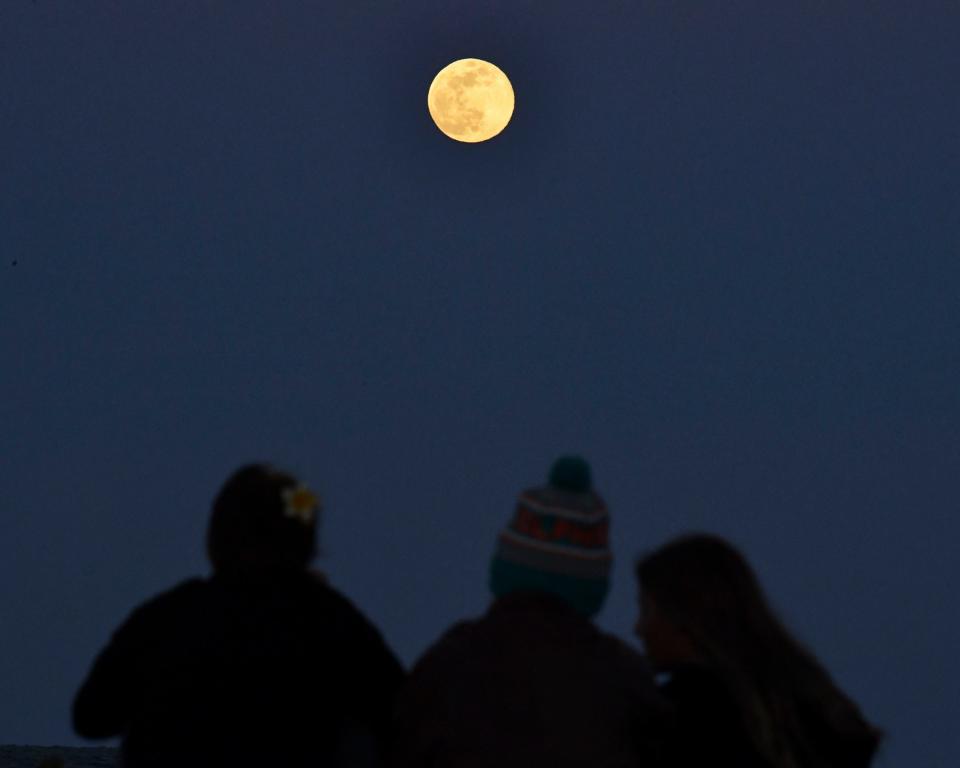
January is dark and cold, giving over its evenings to wolves who howl and hunt amid the deep snowpack of midwinter. It has other names, according to a compilation by Western Washington University, including the Maker Moon, Great Spirits Moon, and from the Arapaho tribe of the Great Plains, the moon when snow blows like spirits in the wind.
Snow Moon, February
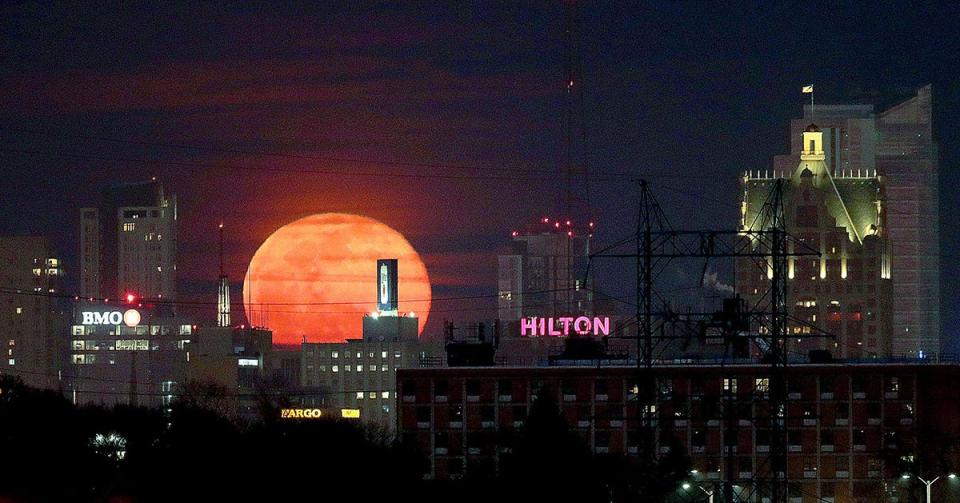
February was a time when food stores may have been running low and hunting in the snow was difficult. For the Arapaho, February was the moon of frost sparkling in the sun. The Assiniboine in the Northern Plains called it the Long Dry Moon.
Worm Moon (or Crow Moon), March
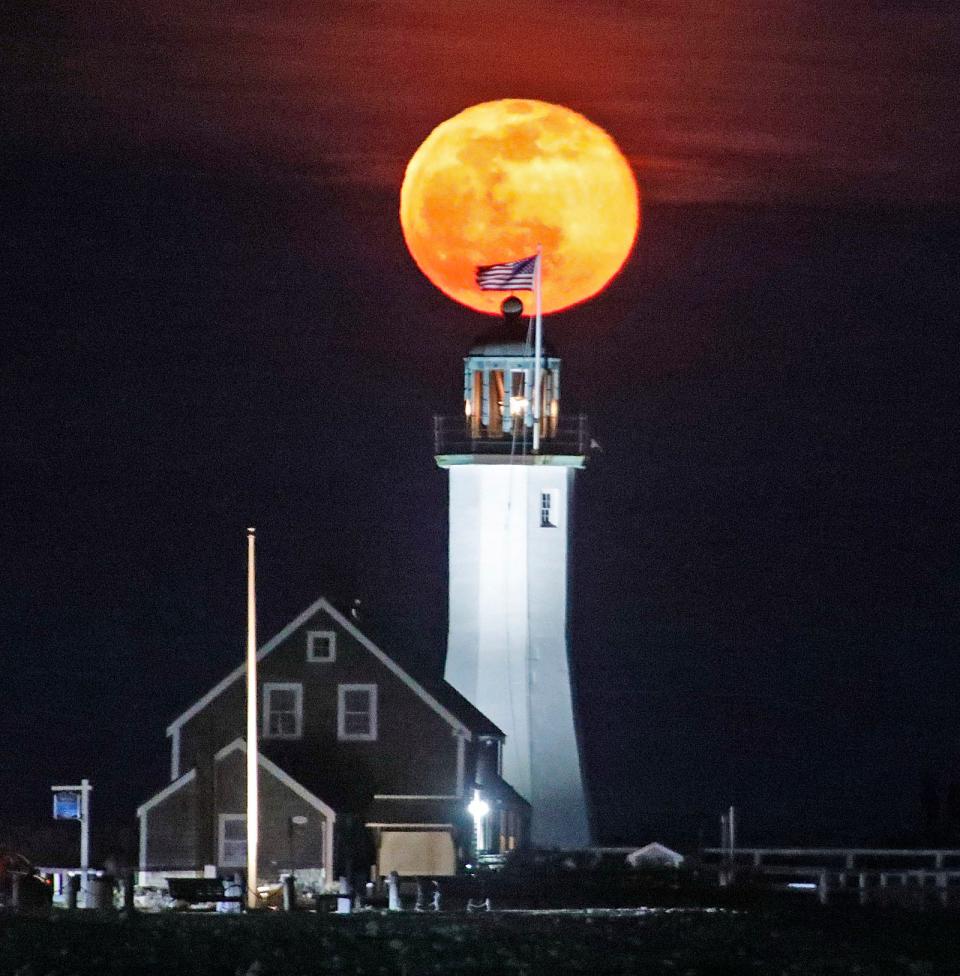
This is a time when the land softens, the earthworms reappear and the robins return. Basically, it signals the end of winter. It was also called the Crow Moon by northern tribes, and the moon of buffalo dropping their calves by the Arapaho of the Great Plains.
Pink Moon, April
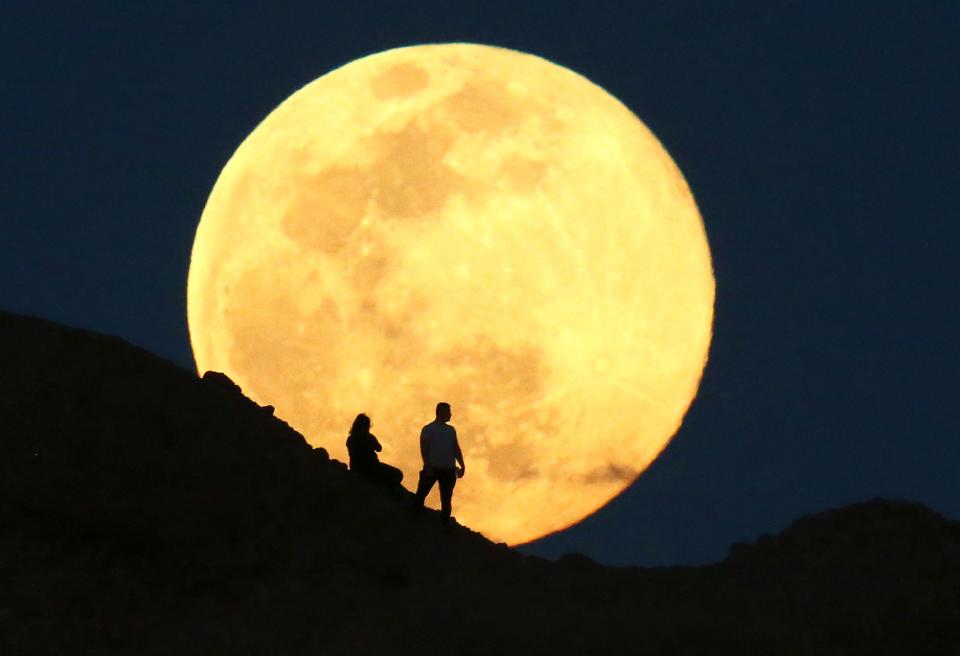
In April, the groundcover phlox would appear with pink flowers signaling spring. It was also called the Full Sprouting Grass Moon, and the Full Fish Moon, which was a nod by some coastal tribes to shad coming upstream to spawn. Sometimes this is the first full moon after the spring equinox, marking it as the Paschal Full Moon. The Paschal Full Moon, which sometimes occurs in March, determines what date Easter falls on.
Flower Moon, May
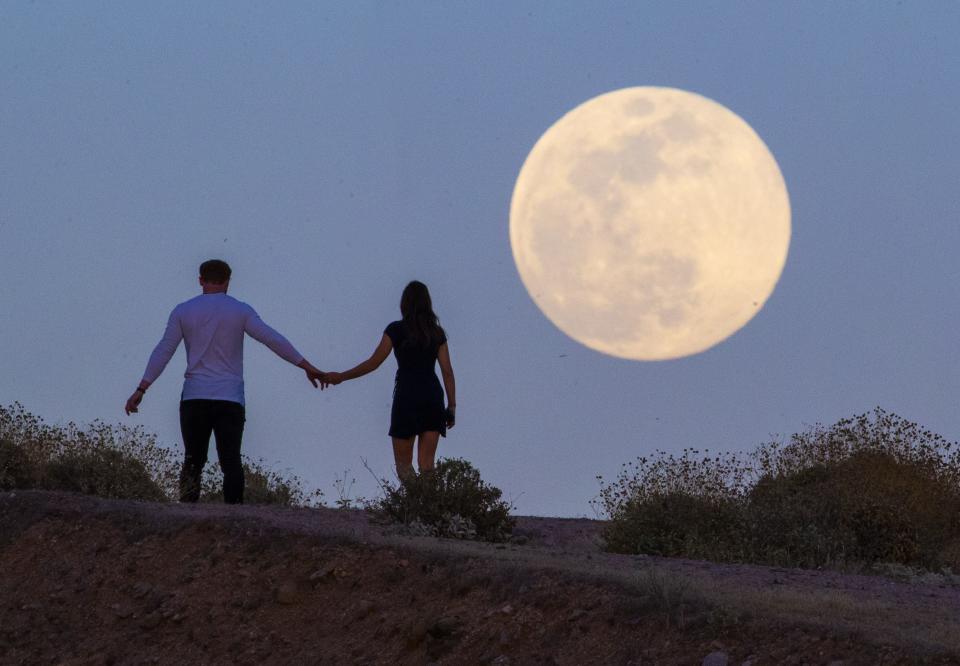
Flowers become more abundant in May, but May’s moon is also called the Full Corn Planting Moon and the Milk Moon. In the Northern Plains, it was given the name the Idle Moon. The Cherokee of the East Coast called it the Planting Moon.
Strawberry Moon, June

June is the time to pick strawberries. It is also a time when the corn is not yet ripe, giving June the name the Green Corn Moon or the Full Leaf Moon. The Arapaho of the Great Plains dubbed this moon the moon when the buffalo bellows.
Buck Moon, July
In July, deer begin to grow their new antlers. The Apache of the Southern Plains called July the moon of the horse/time of ripeness.
Sturgeon Moon, August
Fishing is robust in August in many areas around the Great Lakes. The Anishinaabe of the Great Lakes also called this the Berry Moon, while their neighbors to the northeast, the Algonquin, said the August moon is when Indian corn is edible.
Harvest Moon, September

According to Space.com, the Harvest Moon traditionally is the moon closest to the fall equinox, which is usually Sept. 22 or 23. Fall vegetables including corn, pumpkins, squash, beans and wild rice are ready to harvest. The Arapaho of the Great Plains call September the Drying Grass Moon.
Hunter’s Moon, October
With the harvest gathered, October is a time to hunt. It is also a time for a marked change in seasons, with the Arapaho calling October the Falling Leaves Moon, and the Algonquin calling it the moon of white frost on grass.
Beaver Moon, November
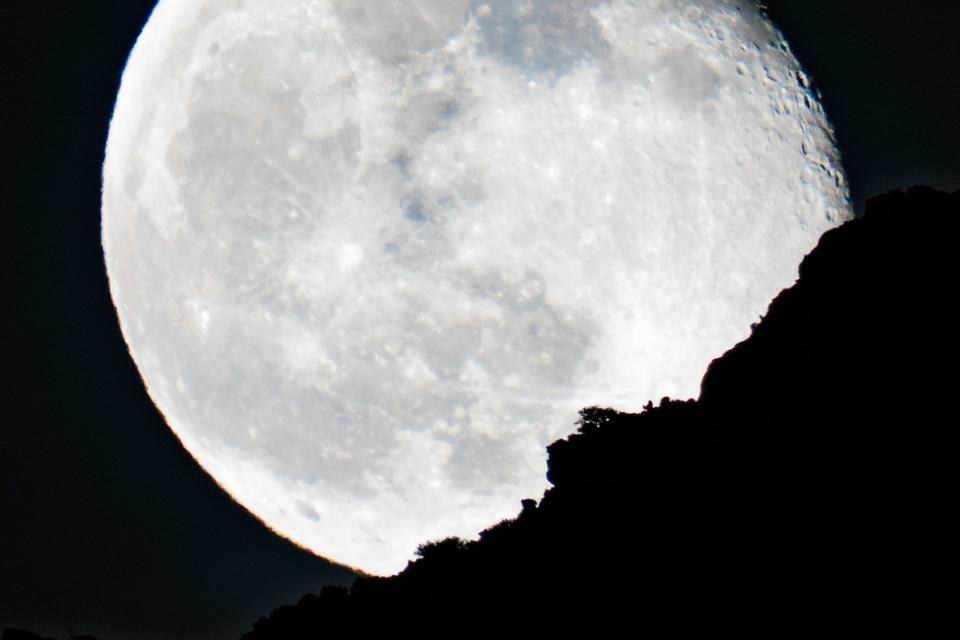
There are different ideas on why November is the Beaver Moon, including that it is a time when beavers are active before winter and that it is a signal to set traps before waterways freeze. The Abenaki of Northeast Maine called November the Freezing River Maker Moon.
Cold Moon, December
The first day of astronomical winter is Dec. 21 or 22. It is when the top half of the Earth is tilted away from the sun, giving way to colder days and longer nights. The Cherokee also called it the Snow Moon. To the Comanche of the Southern Plains, it was the Evergreen Moon.
What’s a Supermoon?
The term supermoon has many meanings. For staunch astronomers, it is usually the closest moon of the year to Earth, but astrophysicist Fred Espenak gives the title to full moons that come within 90 percent of the closest approach to Earth. Depending on the source, there could be one, four or six supermoons on average a year.
What about a Blue Moon?
Blue Moons, like Supermoons, have different definitions. Some steadfast blue mooners consider a moon blue only if it’s the second full moon in a month. But Blue Moons can also be defined as the third of four full moons in a season — the time between a solstice and an equinox, according to EarthSky.org.
“How can both of them be Blue Moons? The answer stems from the nature of skylore, and folklore in general. It’s lore. And it’s of the ‘folk.’ So it sometimes gets messy,” wrote EarthSky columnists Bruce McClure and Deborah Byrd.
Kimberly Miller is a veteran journalist for The Palm Beach Post, part of the USA Today Network of Florida. She covers real estate and how growth affects South Florida’s environment. Subscribe to The Dirt for a weekly real estate roundup. If you have news tips, please send them to kmiller@pbpost.com. Help support our local journalism, subscribe today.
This article originally appeared on Palm Beach Post: August moon is also supermoon and a blue moon: full moons explained
EMEA Tribune is not involved in this news article, it is taken from our partners and or from the News Agencies. Copyright and Credit go to the News Agencies, email news@emeatribune.com Follow our WhatsApp verified Channel





